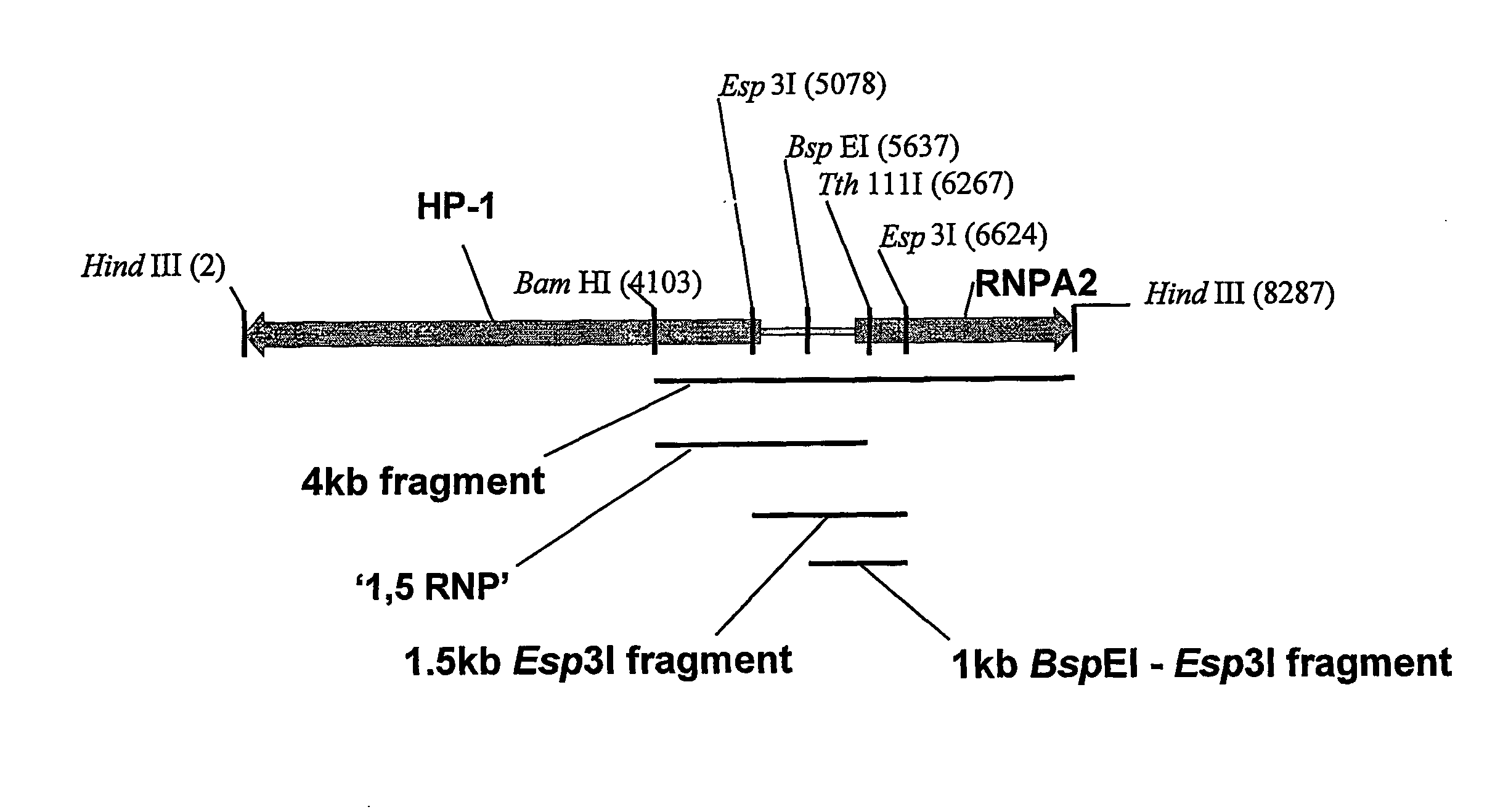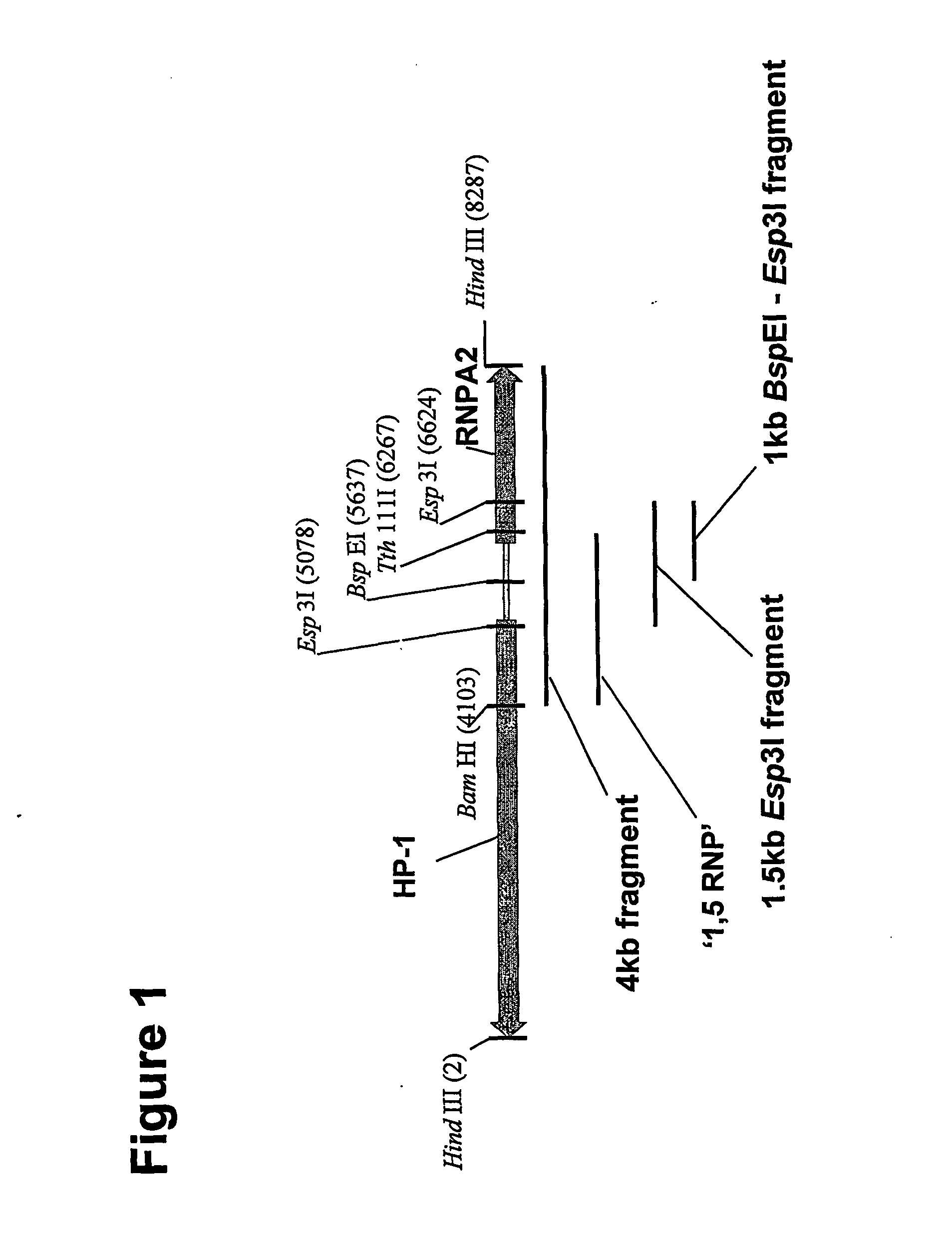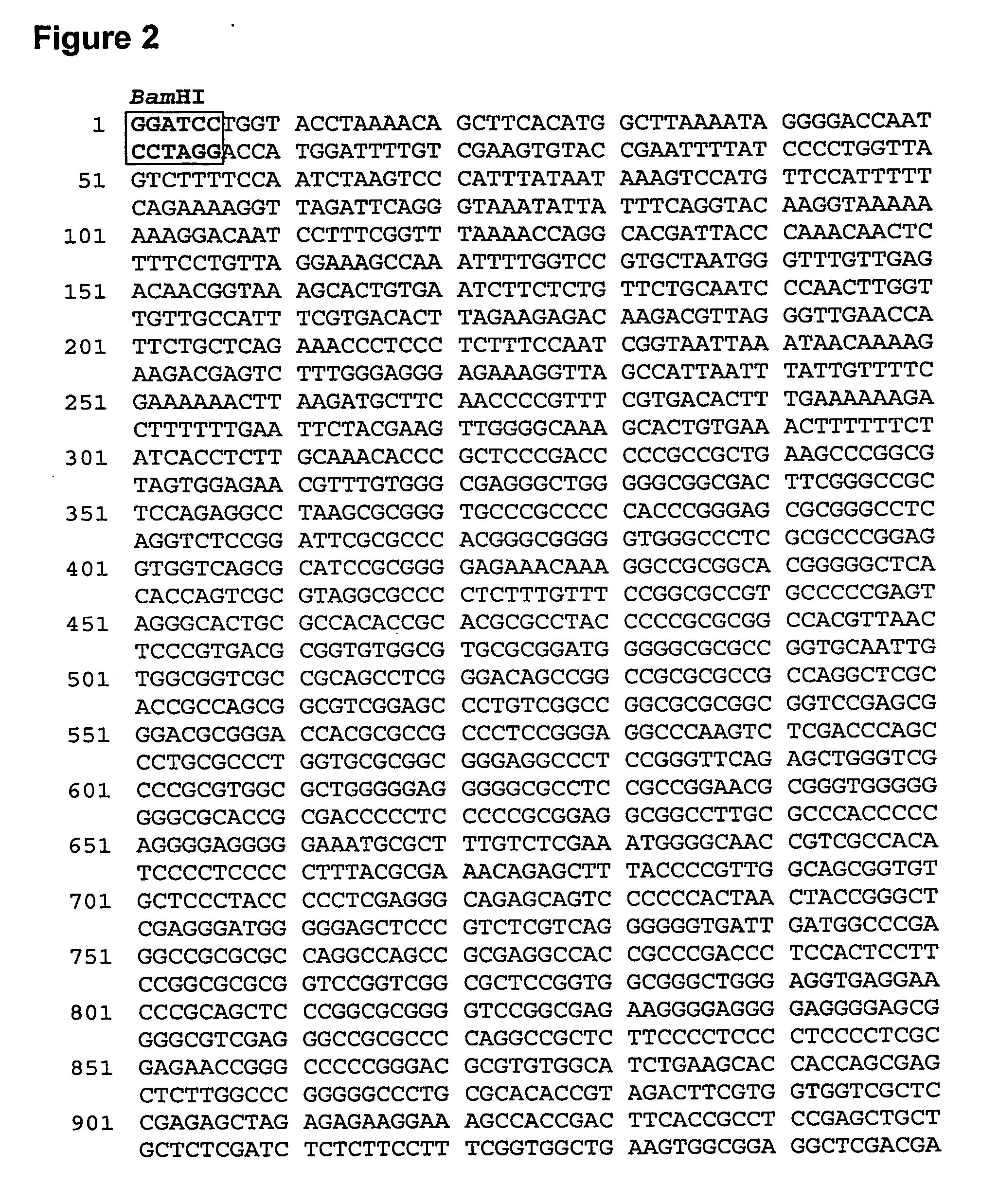Expression Elements
a technology of expression elements and elements, applied in the field of polynucleotide, can solve the problems of not being able to use significantly smaller fragments, and achieve the effect of facilitating sequencing
- Summary
- Abstract
- Description
- Claims
- Application Information
AI Technical Summary
Benefits of technology
Problems solved by technology
Method used
Image
Examples
example 1
A 1.5 kb HP-1 / hnRNP A2 UCOE Enhances Expression
[0094]Materials and Methods
[0095]Construction of Vectors
[0096]As discussed in our earlier application WO 00 / 05393, vector CET20 was generated by cloning an 8.3 kb HindIII fragment of the human HP-1 / hnRNP A2 locus (which contains the HP1 / RNP promoters and the extended CpG island) into pBluescript (Stratagene).
[0097]A 4186 bp (referred to as 4 kb) fragment of the insert was then removed by digestion with BamHI and HindIII. This fragment was end filled using T4 DNA polymerase and ligated into pEGFPN-1 (Clontech) that had been digested with Asel and end filled again using T4 DNA polymerase. Clones were then isolated with the fragment in both orientations.
[0098]The 1546 bp Esp3I (isoschizomer of BsmBI) fragment (referred to as the 1.5 kb fragment) was again isolated from CET20 by digestion with Esp3I (BsmBI) followed by end filling, this was then ligated into the Asel site of pEGFPN-1 as described above and clones identified with the fragmen...
example 2
A 1kb HP-1 / hnRNP A2 UCOE Enhances Expression
[0106]Materials and Methods
[0107]Construction of Vectors
[0108]The 1 kb UCOE containing vector was constructed by digesting the pEGFPN-1 vector with the 1.5 kb Esp3I fragment in the forward orientation with PciI and BspEI to remove the 5′ 500 bp, followed by end filling and re-ligation. This generated a vector with the 987 bp BspEI-Esp3I fragment in one orientation only.
[0109]Results
[0110]The 1 kb (987 bp) fragment in the forward orientation appears comparable with the 1.5 kb fragment in the forward orientation in terms both of median fluorescence (FIG. 5) and % positive cells (FIG. 6).
example 3
A 1.5 kb HP-1 / hnRNP A2 UCOE Enhances Expression in an Adenovirally Encoded Construct
[0111]Material and Methods
[0112]Cell Culture
[0113]HeLa were obtained from ATCC (Manassas, Va.). PER.C6 were obtained from Crucell, (Leiden, The Netherlands). All purchased cell lines were cultured as recommended by the supplier. 911 cells were kindly provided by Prof. L. S. Young (Cancer Research UK Institute for Cancer Studies, University of Birmingham, Birmingham, UK) and were cultured in DMEM / 10% FCS containing antibiotics.
[0114]Plasmid Construction
[0115]PGL3basic was obtained from Promega (Madison, Wis., USA) and contains the Luciferase-SV40p(A) cassette downstream from the multiple cloning site. The human CMV enhancer / promoter (0.9 kb) was cloned into SmaI digested pGL3basic to generate pGL3 / CMV-Luc-SV40p(A). To generate pGL3 / 1.5 kb(F)UCOE-CMV-SV40p(A) the 1.5 kb UCOE Esp3I fragment (see FIGS. 1 and 2) was blunted with T4 DNA polymerase (NEB, Beverly, Mass., USA) and then ligated into NheI diges...
PUM
| Property | Measurement | Unit |
|---|---|---|
| size | aaaaa | aaaaa |
| chromatin structure | aaaaa | aaaaa |
| drug resistance | aaaaa | aaaaa |
Abstract
Description
Claims
Application Information
 Login to View More
Login to View More - R&D
- Intellectual Property
- Life Sciences
- Materials
- Tech Scout
- Unparalleled Data Quality
- Higher Quality Content
- 60% Fewer Hallucinations
Browse by: Latest US Patents, China's latest patents, Technical Efficacy Thesaurus, Application Domain, Technology Topic, Popular Technical Reports.
© 2025 PatSnap. All rights reserved.Legal|Privacy policy|Modern Slavery Act Transparency Statement|Sitemap|About US| Contact US: help@patsnap.com



